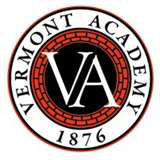
Flora MacDonald was a member of Clan Macdonald of Sleat, best known for helping Charles Edward Stuart evade government troops after the Battle of Culloden in April 1746. Her family generally backed the government during the 1745 Rising and MacDonald later claimed to have assisted Charles out of sympathy for his situation.

Red Springs is a town in Robeson counties in the U.S. state of North Carolina. The population was 3,428 at the 2010 census.

Ralph Adams Cram was a prolific and influential American architect of collegiate and ecclesiastical buildings, often in the Gothic Revival style. Cram & Ferguson and Cram, Goodhue & Ferguson are partnerships in which he worked. Cram was a fellow of the American Institute of Architects.

Barber–Scotia College is a private unaccredited historically black college in Concord, North Carolina. It began as a seminary in 1867 before becoming a college in 1916. It is affiliated with the Presbyterian Church (USA).
The Free Church of Scotland is an evangelical, Calvinist denomination in Scotland. It was historically part of the original Free Church of Scotland that remained outside the union with the United Presbyterian Church of Scotland in 1900. Now, it remains a distinct Presbyterian denomination in Scotland.

Vermont Academy (VA) is a private, co-educational, college preparatory, boarding and day school in Saxtons River, Vermont, serving students from ninth through twelfth grade, as well as postgraduates. Founded in 1876, the campus was listed on the National Register of Historic Places as the Vermont Academy Campus Historic District in 2015.

St. Andrews University is a private Presbyterian university in Laurinburg, North Carolina. It was established in 1958 as a result of a merger of Flora MacDonald College in Red Springs and Presbyterian Junior College; it was named St. Andrews Presbyterian College from 1960 until 2011 when the college changed its name to St. Andrews University. That same year, it merged with Webber International University of Babson Park, Florida. It is also home to the St. Andrews Press. In 2013, St. Andrews added its first graduate program, an MBA in business administration.

Nathan Hardy Andrews was a pitcher in Major League Baseball who played for the St. Louis Cardinals, Cleveland Indians (1940–41), Boston Braves (1943–45), Cincinnati Reds (1946) and New York Giants (1946). Andrews batted and threw right-handed. He was born in Robeson County, North Carolina.
West Nottingham Academy is an independent co-ed school serves both boarding and day students in grades 9-12. It was founded in 1744 by the Presbyterian preacher Samuel Finley, who later became President of The College of New Jersey, which is now Princeton University. The 124-acre (0.50 km2), tree-lined campus is in Colora, Maryland near the Chesapeake Bay, an hour south of Philadelphia and 45 minutes north of Baltimore.
This is an incomplete list of historic properties and districts at United States colleges and universities that are listed on the National Register of Historic Places (NRHP). This includes National Historic Landmarks (NHLs) and other National Register of Historic Places listings. It includes listings at current and former educational institutions.

John Bethune was a Scottish Presbyterian minister, who served and helped found Reformed congregations among the Scottish diaspora in the Colony of North Carolina, Quebec, and in Upper Canada.

Chamberlain-Hunt Academy was a boarding school in Port Gibson, Mississippi. The school was founded in 1830 as Oakland College and closed in 2014.

Washington College Academy was a private Presbyterian-affiliated educational institution located in Washington College, Limestone, Tennessee. Founded in 1780 by Doctor of Divinity Samuel Doak, the academy for many years offered accredited college, junior college and college preparatory instruction to day and boarding students, but financial difficulties in the 2000s forced the school to restructure its offerings and focus instead on continuing education courses for adults.

The First Presbyterian Church is a historic church building in Columbia, South Carolina. Constructed in 1854, it was added to the National Register of Historic Places on January 25, 1971.

Andrew Wallace Williamson KCVO, was a Church of Scotland minister who was Dean of the Thistle. He was Moderator of the General Assembly in 1913.

Maxton Historic District is a national historic district located at Maxton, Robeson County, North Carolina. The district encompasses 49 contributing buildings in the central business district and surrounding residential sections of Maxton. It includes buildings built between about 1884 to 1948 in a variety of popular architectural styles including Classical Revival. Notable buildings include the Cape Fear and Yadkin Valley (CF&YV) Railroad Freight Warehouse, Maxton Union Station (1913), Seaboard Air Line Railroad warehouse and office, First Presbyterian Church (1906), St. Paul's Methodist Episcopal Church (1906) designed by architect Henry E. Bonitz, Gilbert Patterson Law Office, A.J. MacKinnon House, and the R.L. MacLeod House.

Salisbury Historic District is a national historic district located at Salisbury, Rowan County, North Carolina. The district encompasses 348 contributing buildings and 1 contributing site in the central business district and surrounding residential sections of Salisbury. It includes notable examples of Late Victorian, Colonial Revival, and Bungalow / American Craftsman style architecture. Located in the district are the separately listed Maxwell Chambers House, McNeely-Strachan House, Archibald Henderson Law Office, and the former Rowan County Courthouse. Other notable buildings include the tower of the former First Presbyterian Church (1891-1893), Rowan County Courthouse (1914), Conrad Brem House, Kluttz's Drug Store, Bell Building, Washington Building, Grubb-Wallace Building, Hedrick Block, Empire Hotel, St. Luke's Episcopal Church (1827-1828), Soldiers Memorial A.M.E. Zion Church (1910-1913), U.S. Post Office and Courthouse (1909), City Hall (1926), Salisbury Fire House and City Building (1897).
Flora MacDonald was an 18th-century member of Clan Macdonald of Sleat.
Margaret Ferrell Vardell Sandresky is an American composer, organist and teacher. She was still composing on her 100th birthday. She was a founding member of the Society for Music Theory (SMT) as well as its first female contibutor.


















